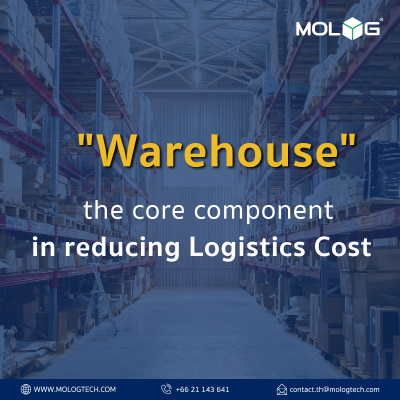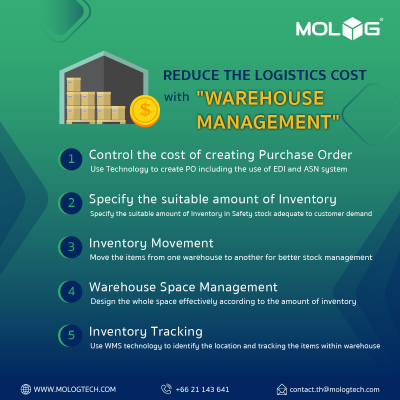
We all know warehouses are places to store large number of items which we called
” inventory ” before they all got delivered to customers’ hands. Inventory requires complex management because each type of inventory has different properties and storage procedures. Before we discuss about inventory management, let’s see how many types of inventories are there?
Inventory is divided into 3 types
- Raw materials and supplies are inventory waiting for production. There is not much alteration made to this type of inventory computer parts, products from plants as such.
- Work in process is a type of inventory that is in between production process or about to alter item’s condition such as woven shirt waiting for button fixing or processed foods prepared for packaging
- Finished good and product are finished inventory ready for sale or the condition of the product has been altered completely such as ready-to-eat meals, household appliances
Each type of inventory need different work flows and different movements. The raw materials and finished inventory have the most flexibility because these types of inventories are easy to release. At the same time, work-in-process inventory, though, has slower flows, this type of inventory is still in production process which made them difficult to use and that is why most of the companies try to reduce them as much as possible.
There’s more to the complexity of the warehouses!?
There is more detail to all the processes in the warehouses from receiving goods, goods storage, managing goods within the warehouse and systematically releasing them from the warehouse.
Warehouse could help us earn ” money “
Yes, we definitely earn more money because systematic warehouse management allows us to accurately calculate number of products leaving no out-of-stock products and fewer mistakes for pick-and-pack process. What’s more, it helps making work more efficiently through accurate destination delivery, so you do not have to waste your time and save your income from unnecessary mistakes.
” Reduced costs ” lead to more income
There are 3 main types of logistics cost which are transportation cost, management cost and cost from inventory maintenance which usually includes the cost from inventory holding and the cost of warehouse management.

MOLOG helps you collects warehouse management guidelines that able to reduce inventory costs as follows:
- Purchase order cost controlling
Technology can be replaced at this step to help create purchase orders (Purchase Order: PO) by using Electronic Data Interchange: EDI system to transmit purchase order (PO) information as the advance notice for delivery (Advance Shipping Notices: ASNs) before the product arrives at the warehouse. Besides, technology recommendation includes the use of supplier assessment system and warehouse equipment maintenance in the warehouse to cut down all the unnecessary costs.
- Determine the appropriate amount of inventory
Determining the amount of inventories which we also called ‘Safety Stock’ in order to have enough products for delivery to customers. Safety stock can increase customer satisfaction and results in more. Moreover, it can reduce the incidence of inventory shortage and no goods to deliver according to purchasing order.
- Inventory transfer
Transfer inventory from one warehouse to another warehouse when some items are overloaded to balance the quantity of products between all warehouses.
- Optimal use of warehouse space
We should design warehouse space to appropriately store all the inventory. The design could start from sorting all the inventory to fit the area and move all of the Dead Stock out of the warehouse first.
- Inventory Tracking
Technology can be used to determine the location and tracking inventory within the warehouse by using WMS along with scanning barcodes on all the items and pallets. The system can suggest the location on rack storage where items could be stored, which items should be picked and packed in order to save time.
However, warehouse cannot be operated without the management system. The best way is to use WMS (Warehouse Management) for warehouse management because there is real-time processing data storage to calculate for all the functions (Read 5 main challenges warehouse managers commonly face if there is no Warehouse Management System (WMS) at: (Article Link)
Who should be using WMS to manage and reduce inventory costs?
- Ecommerce Business: Online retailers often have large amount of inventory to track and to efficiently manage. WMS can help keep track of inventory, orders, and all the shipping processes.
- Manufacturer: Companies that produce goods can use WMS to manage their inventory, raw materials, and finished goods. It can help increase the efficiency of production process and reduce waste.
- Distributor: Businesses that distribute products to retailers or regular customers can use WMS to manage their inventory and shipping processes. It can help improve order handling and reduce errors.
- 3PL/Fulfillment Service Provider: Logistics service provider, 3PL and fulfillment often manage inventory and shipping processes for multiple customers. WMS will be able to help keep track of customer inventory and orders as well as operating their own warehouses.
- Retailer: Physical retailers, including online sales channels, can use WMS to manage their inventory in multiple locations. This can help optimize inventory levels and improve customer service.
However, choosing a suitable method to reduce warehouse costs can be selected according to the condition of each business and how their warehouses process at present in order to help develop and made warehouse management smoothly and quickly.😊
Interested in WMS system that able to reduce your business cost?
MOLOG WMS can help.
Please fill the form for free demo request!!️
at: https://bit.ly/Register_free_demo
For more details, please contact Molog team for more information about WMS and the suitable package at your budget
Reference from:
https://www.logisticafe.com/2018/05/warehouse-and-inventory-management/
https://domitos.com/th/blog/warehouse-logistics/
https://www.iok 2 u.com/article/logistics-supply-chain/ct 51-15
https://hmgroupthailand.com/th/blog/detail/ 10 tipsforstockmanagement
http://www.similantechnology.com/news&article/warehouse-cost.html